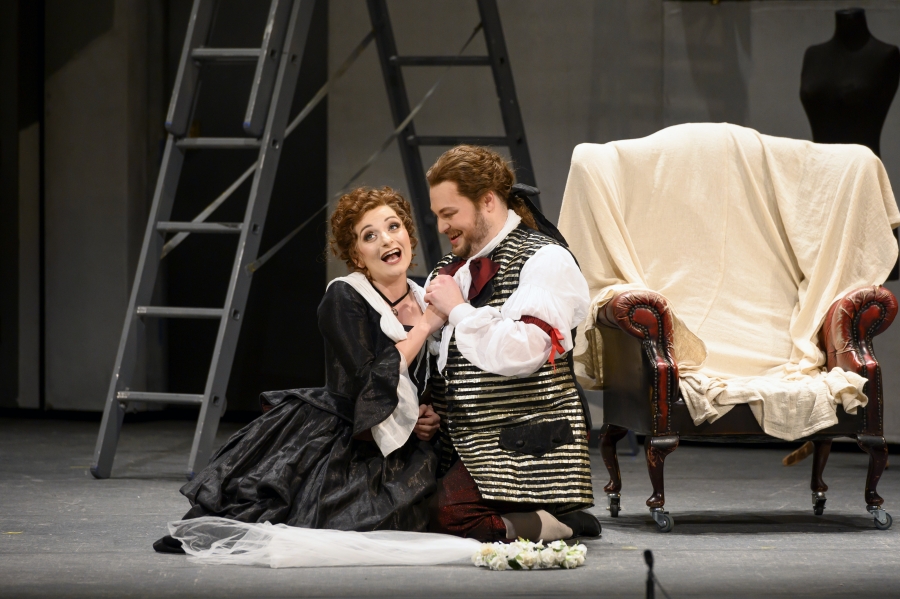This is a dramatically reworked version of Tobias Richter’s 2016 production and sung in Italian rather than English. It is so different I hardly remembered it. However, I don’t think I will remember this version either as it is a rather bland production albeit with pleasing performances. Reworked by Max Hoehn, there were a few laughs along the way and some nice little touches but Mozart’s battle of the sexes and the classes was a little flat.
The earlier version was a play-within-a-play with characters appearing as if they are both on stage and waiting in the wings. This made sense in a simple, revolving panels set from Ralph Koltai that does resemble a makeshift theatre. However, we are now reduced to those panels, either half decorated in grey for Figaro and Susanna’s bedroom, reversed to create the Countess’ golden and blue boudoir (opens up for other areas) and then reappearing with an abstract green pattern for the garden scene, having no significance beyond functionality. This odd world is incongruously inhabited by characters in splendid period costumes from Sue Blane.
The clever servants Figaro and Susanna are played by David Ireland and Soraya Mafi, pictured above, giving hearty performances with plenty of character and vigour. Anita Watson is a secure Countess rising to her set piece arias. The most difficult role, Count Almaviva, was enjoyable from Jonathan McGovern, avoiding being a pantomime villain. The comic characters: Leah-Marian Jones’ Marcellina Henry Waddington’s Doctor Bartolo and Richard Roberts’ Don Basilio are all played for laughs but not too farcical. There was some admirable singing from Anna Harvey as Cherubino while Barbarina, sung by Harriet Eyley was charming.
Carlo Rizzi conducted this Sunday afternoon performance, even sharing a scripted drinking joke with Marcellina.
Further performances at Wales Millennium Centre February 21, 23, 28 and touring
Main imageSoraya Mafi and Jonathan McGoverm.
Images: Richard Hubert Smith
This review first appeared in the South Wales Argus
